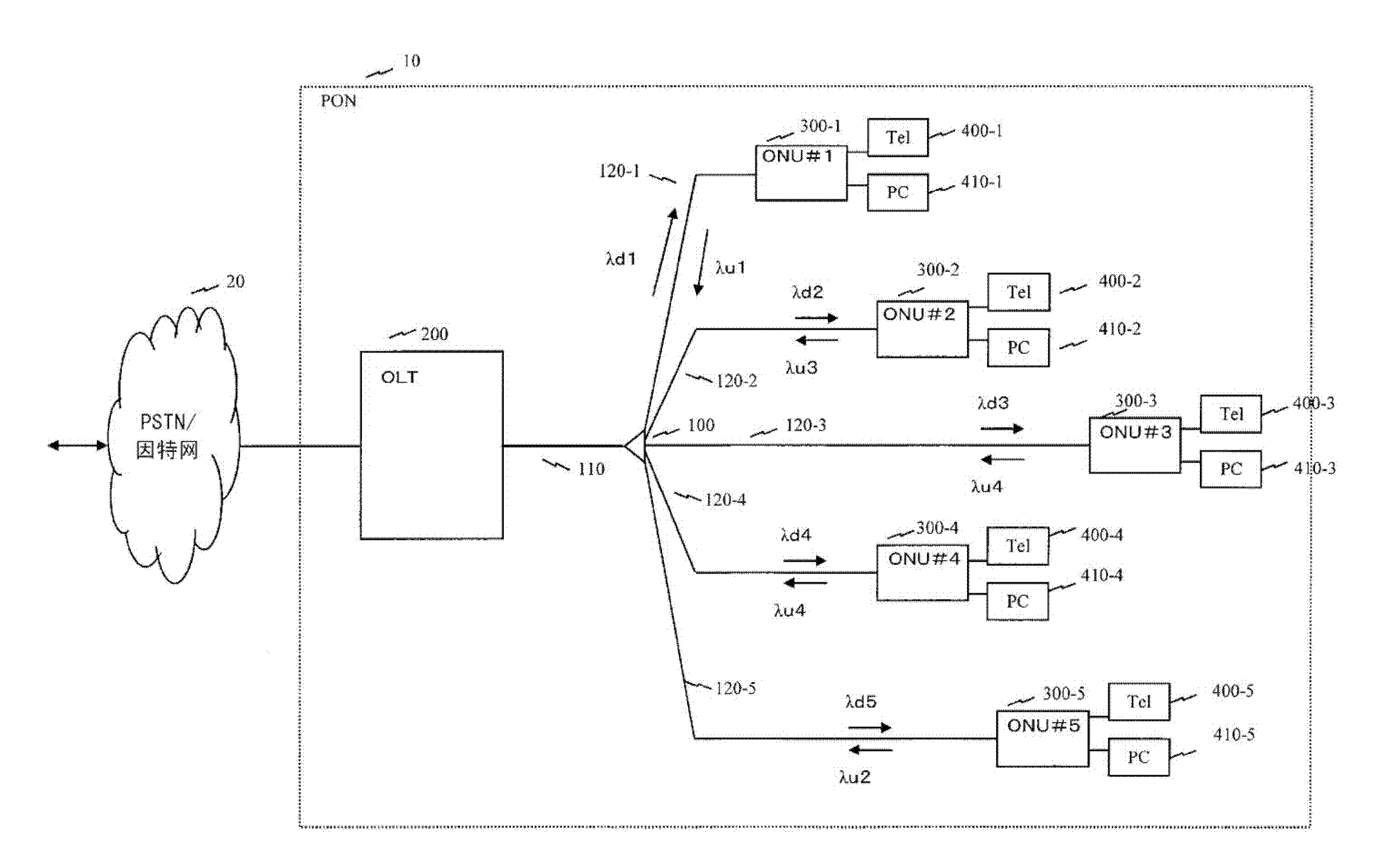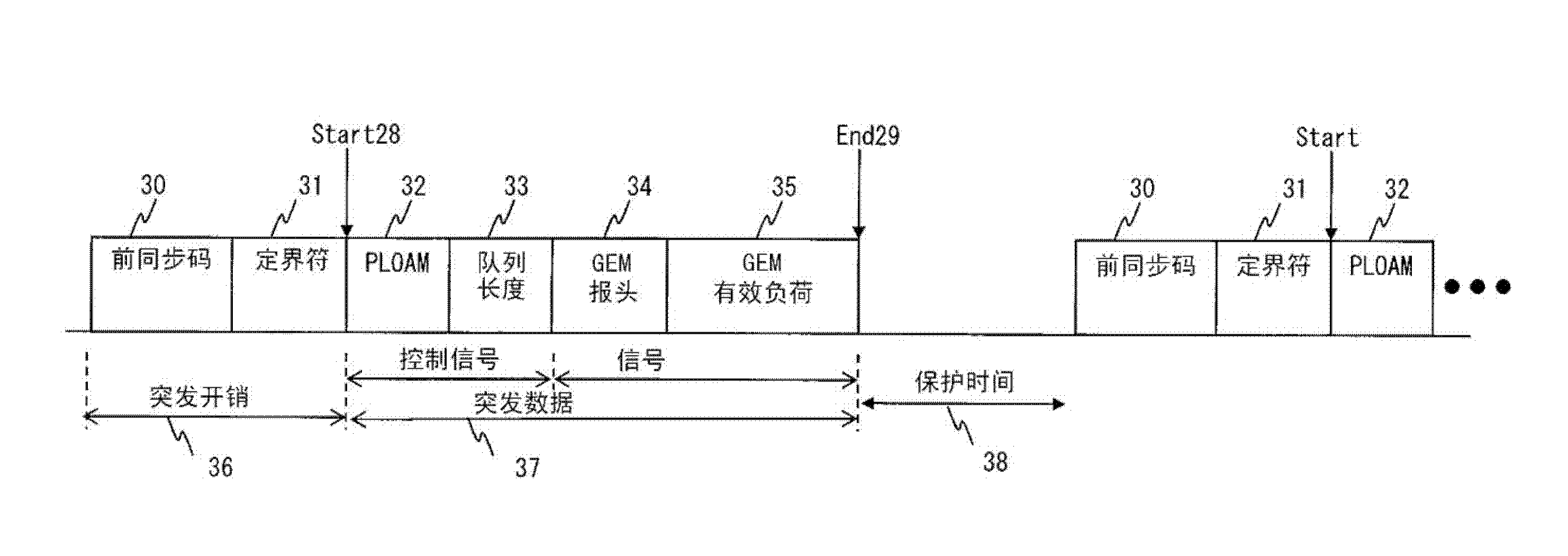Optical multiplexing terminating device, passive optical network system, and method for allocating frequency
A passive optical network system and optical multiplexing technology, applied in optical multiplexing systems, multiplexing system selection devices, wavelength division multiplexing systems, etc., can solve interference, optical signal conflicts, etc. question
- Summary
- Abstract
- Description
- Claims
- Application Information
AI Technical Summary
Problems solved by technology
Method used
Image
Examples
Embodiment Construction
[0096] Hereinafter, the configuration and operation of the PON according to the present embodiment and the wavelength allocation method for realizing the present scheme will be described in detail using the drawings.
[0097] 1. Passive optical network system
[0098] In the following description, assume a PON configured to process wavelength division multiplexed data after allocating wavelengths to each of five ONUs connected to the OLT. One of the ONUs statically allocates unique wavelengths (λd1, λd2, ..., λd5). In addition, among the wavelengths allocated for upstream data from the ONU to the OLT, dynamically allocates 100Mbit / s (accurately 103.68Mbit / s) s, the time slot length is 1620 bytes), 500Mbit / s (accurately 518.4Mbit / s, the time slot length is 8100 bytes), 1Gbit / s (accurately 1036.8Mbit / s, the time slot length is 16200 bytes), 10Gbit / s (accurately 10368Mbit / s, the slot length is 162000 bytes) corresponding to the data wavelengths (λu1, λu2, λu3, λu4), using the ab...
PUM
 Login to View More
Login to View More Abstract
Description
Claims
Application Information
 Login to View More
Login to View More - R&D
- Intellectual Property
- Life Sciences
- Materials
- Tech Scout
- Unparalleled Data Quality
- Higher Quality Content
- 60% Fewer Hallucinations
Browse by: Latest US Patents, China's latest patents, Technical Efficacy Thesaurus, Application Domain, Technology Topic, Popular Technical Reports.
© 2025 PatSnap. All rights reserved.Legal|Privacy policy|Modern Slavery Act Transparency Statement|Sitemap|About US| Contact US: help@patsnap.com



